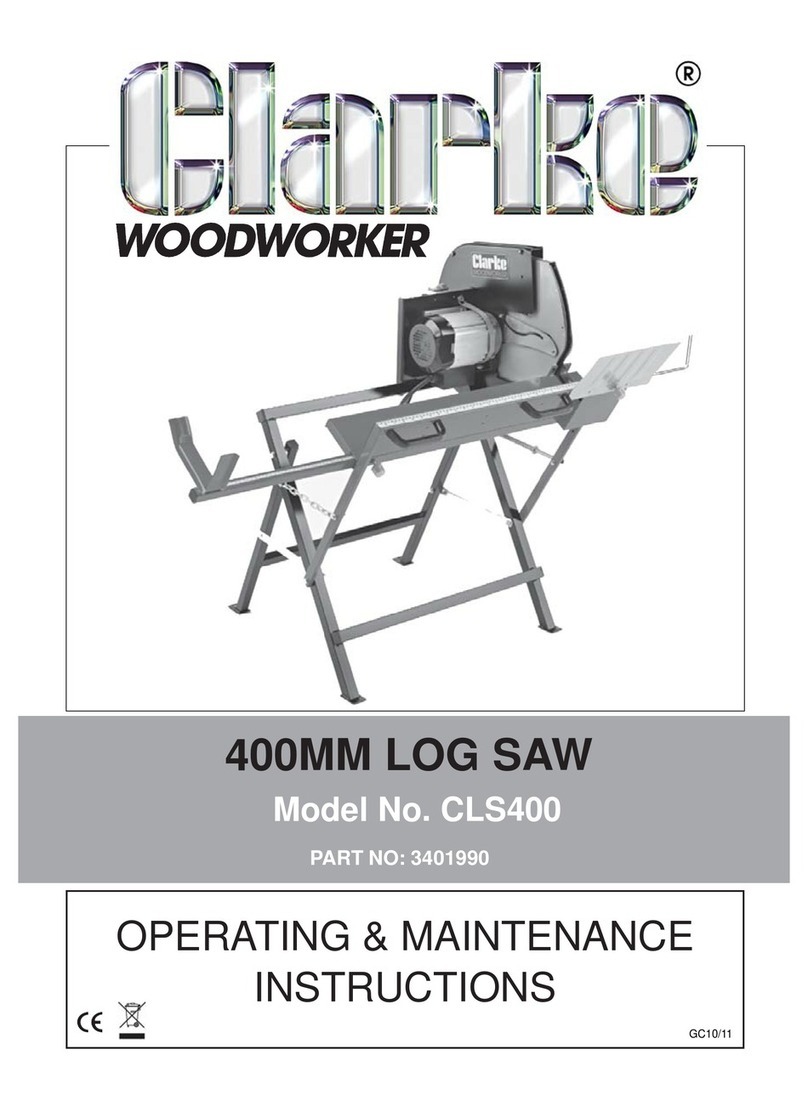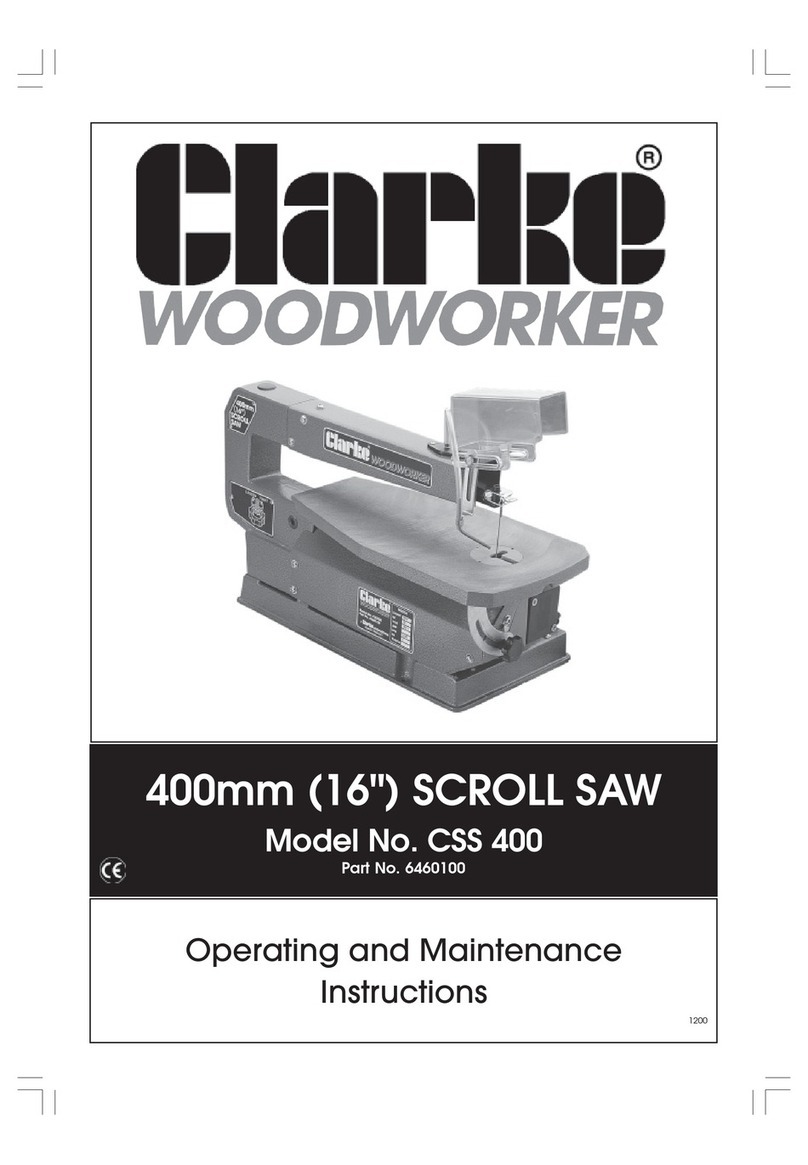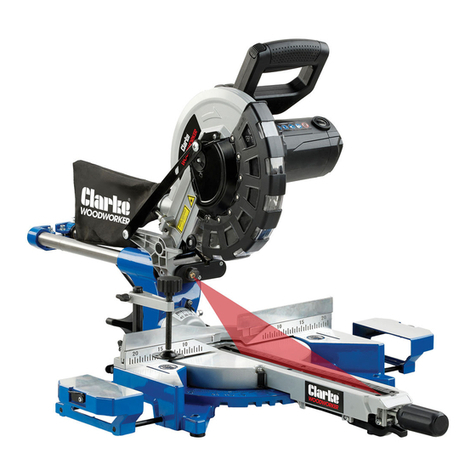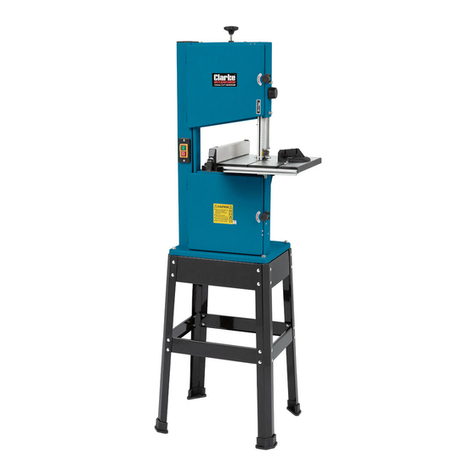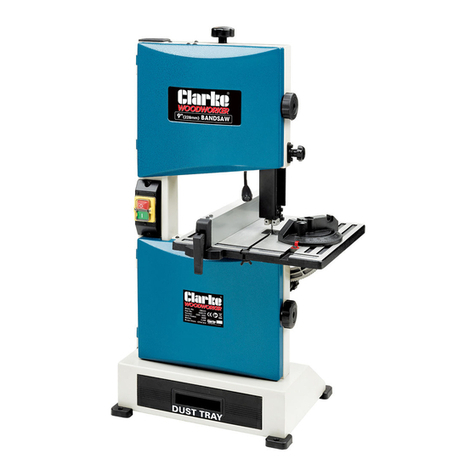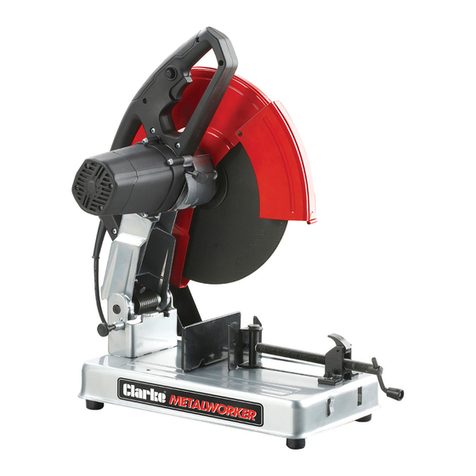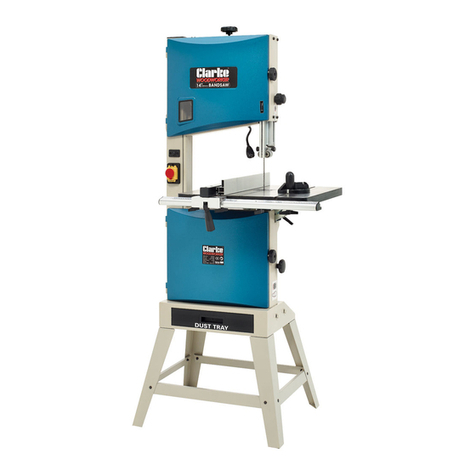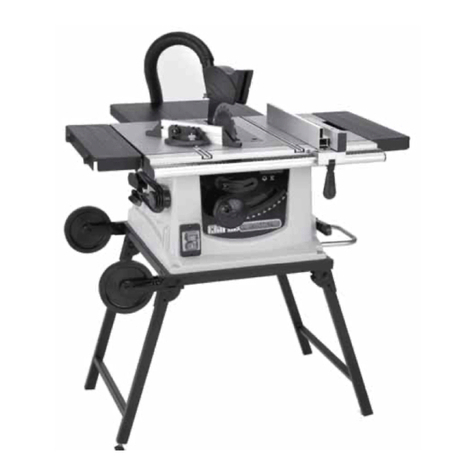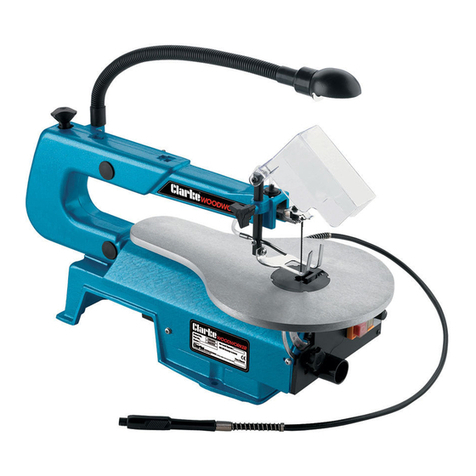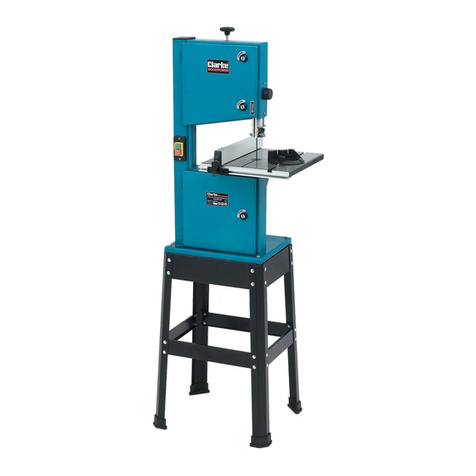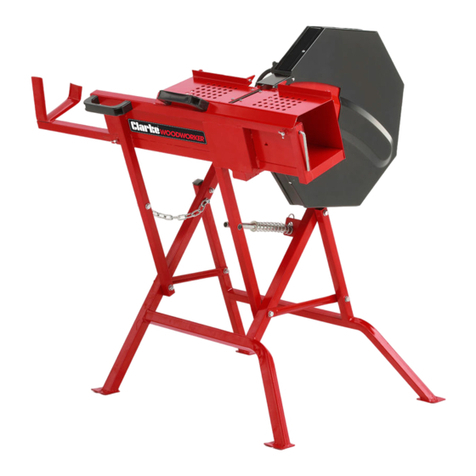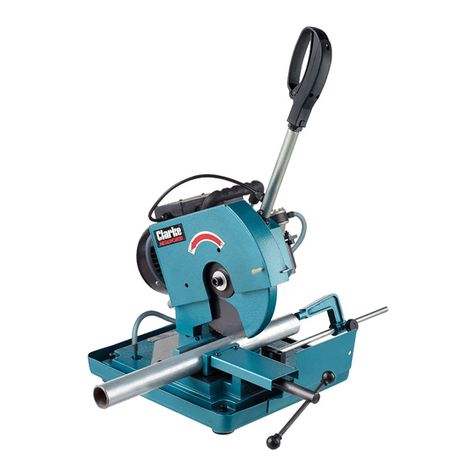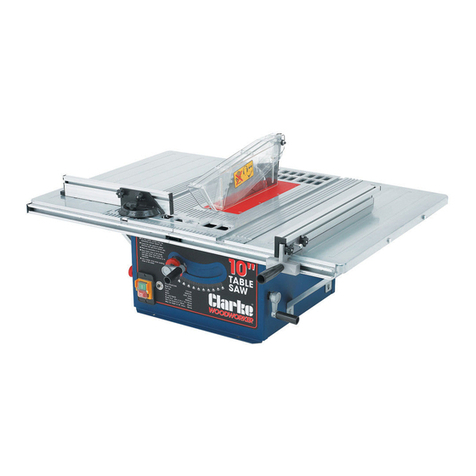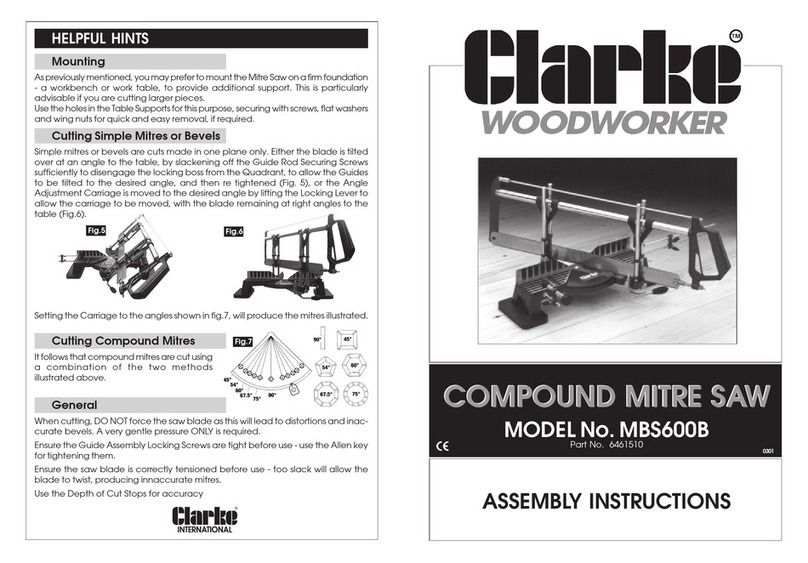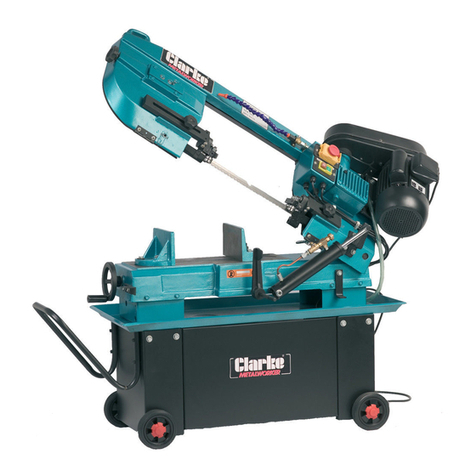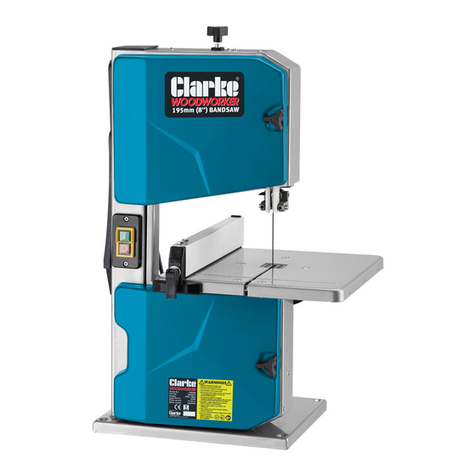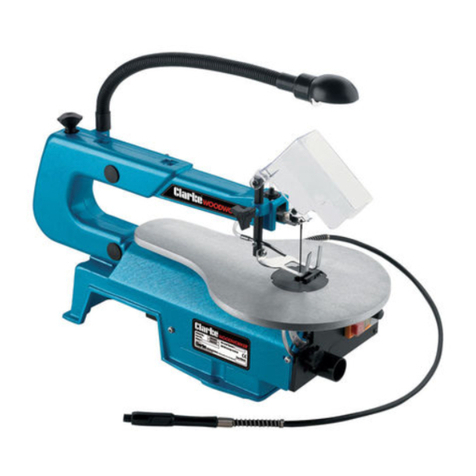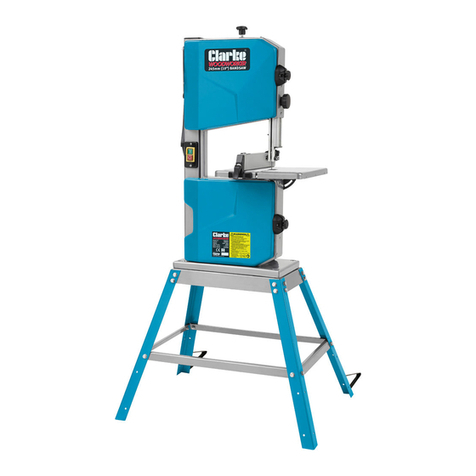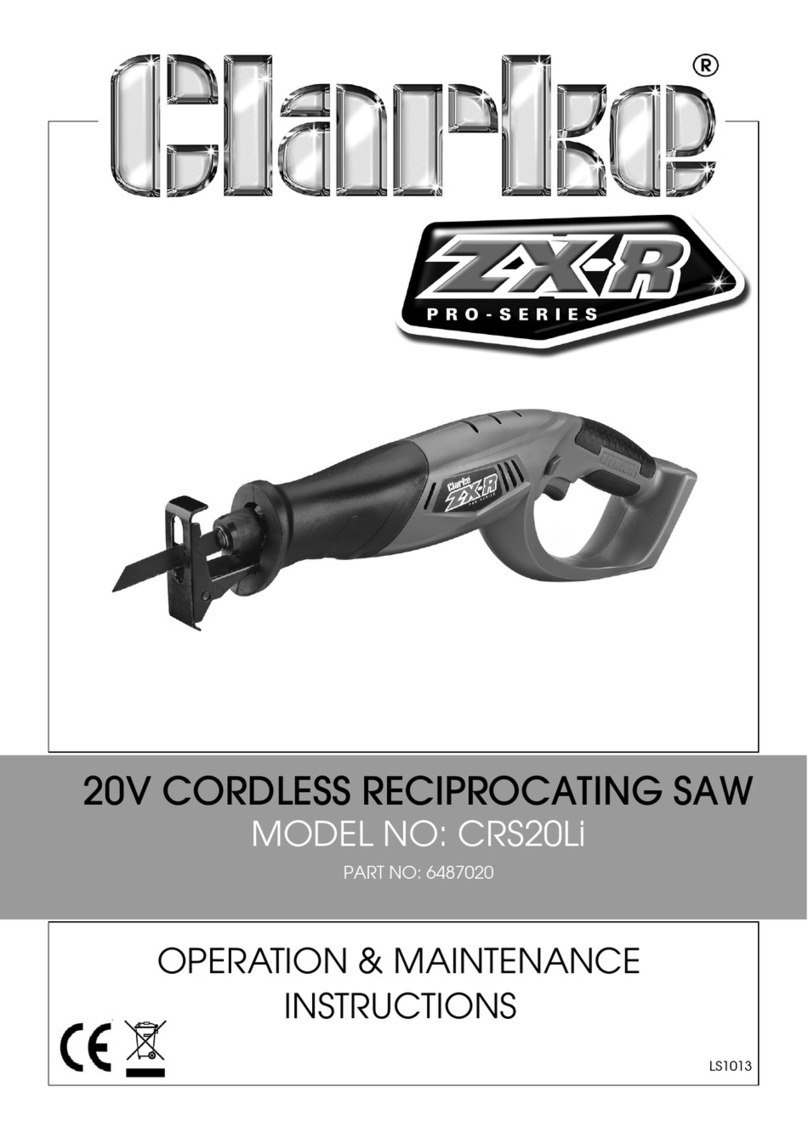
5
Parts & Service: 020 8988 7400 / E-mail: Parts@clarkeinternational.com or Service@clarkeinternational.com
3. DO NOT feed the workpiece into the blade or cut "freehand" in any way.
Unrestrained or moving workpieces could be thrown at high speeds,
causing injury.
4. NEVER cross your hand over the intended line of cutting either in front or
behind the saw blade. Supporting the workpiece "cross handed" i.e.
holding the workpiece to the right of the saw blade with your left hand or
vice versa is very dangerous.
5. DO NOT reach behind the fence with either hand closer than 100 mm from
either side of the saw blade, to remove wood scraps, or for any other
reason while the blade is spinning. The proximity of the spinning saw blade
to your hand may not be obvious and you may be seriously injured.
6. Inspect your workpiece before cutting. If the workpiece is bowed or
warped, clamp it with the outside bowed face toward the fence. ALWAYS
make certain that there is no gap between the workpiece, fence and
table along the line of the cut. Bent or warped workpieces can twist or shift
and may cause binding on the spinning saw blade while cutting. There
should be no nails or foreign objects in the workpiece.
7. DO NOT use the saw until the table is clear of all tools, wood scraps, etc.,
except for the workpiece. Small debris or loose pieces of wood or other
objects that contact the revolving blade can be thrown with high speed.
8. Cut only one workpiece at a time. Stacked multiple workpieces cannot be
adequately clamped or braced and may bind on the blade or shift during
cutting.
9. Ensure the mitre saw is mounted or placed on a level, firm work surface
before use. A level and firm work surface reduces the risk of the mitre saw
becoming unstable.
10. Plan your work. Every time you change the bevel or mitre angle setting,
make sure the adjustable fence is set correctly to support the workpiece
and will not interfere with the blade or the guarding system. Without turning
the tool "ON" and with no workpiece on the table, move the saw blade
through a complete simulated cut to assure there will be no interference or
danger of cutting the fence.
11. Provide adequate support such as table extensions, saw horses, etc. for a
workpiece that is wider or longer than the table top. Workpieces longer or
wider than the mitre saw table can tip if not securely supported. If the cut-
off piece or workpiece tips, it can lift the lower guard or be thrown by the
spinning blade.
12. DO NOT use another person as a substitute for a table extension or as
additional support. Unstable support for the workpiece can cause the
blade to bind or the workpiece to shift during the cutting operation pulling
you and the helper into the spinning blade.
